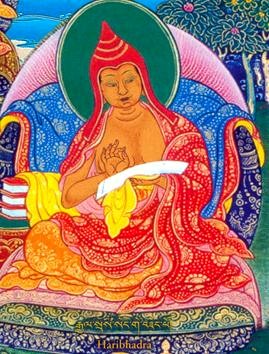Haribhadra: Difference between revisions
Jump to navigation
Jump to search
No edit summary |
No edit summary |
||
| Line 7: | Line 7: | ||
*Easy-to-Comprehend Commentary on the Difficult Points of the Condensed Sutra | *Easy-to-Comprehend Commentary on the Difficult Points of the Condensed Sutra | ||
*Eight Chapters on the 25,000 | *Eight Chapters on the 25,000 | ||
==Further Reading== | |||
*Lobsang N. Tsonawa, ''Indian Buddhist Pandits from The Jewel Garland of Buddhist History'', Dharamsala: Library of Tibetan Works and Archives, 1985. | |||
[[Category:Historical Masters]] | [[Category:Historical Masters]] | ||
[[Category:Indian Masters]] | [[Category:Indian Masters]] | ||
[[Category:Seventeen Nalanda Masters]] | [[Category:Seventeen Nalanda Masters]] | ||
Revision as of 09:33, 12 November 2010

Haribhadra (Tib. Senge Zangpo, wyl. seng ge bzang po) - a great pandita who was a master of the prajnaparamita teachings. He received instructions directly from Maitreya and composed the Sphutartha, which is the most celebrated commentary on Maitreya's Abhisamayalankara.
Writings
- Sphutartha
- Light Ornament: A Great Commentary on the 8,000 Verses
- Easy-to-Comprehend Commentary on the Difficult Points of the Condensed Sutra
- Eight Chapters on the 25,000
Further Reading
- Lobsang N. Tsonawa, Indian Buddhist Pandits from The Jewel Garland of Buddhist History, Dharamsala: Library of Tibetan Works and Archives, 1985.